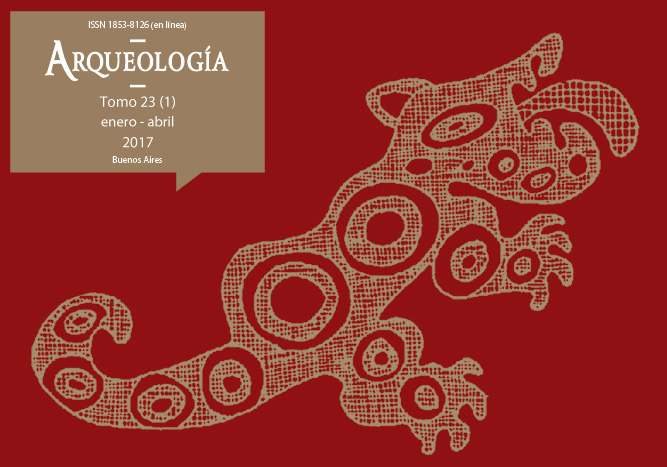Graves, beads, and trade in Northwest Argentina: a first ED-XRF characterization of very well-formed objects
Palabras clave:
ED-XRF, Northwest Argentina, Formative Period, Caravan trade, Beads, Chrysocolla, Turquoise, Variscite
Resumen
The Tafi Valley has a deep-rooted archaeological research tradition in Northwest Argentina. Most the archaeological settlements are from the Formative Period (500 BC – 1000 AC), these have been studied from several perspectives. This article presents the results of non-destructive ED-XRF analyses on exceptionally manufactured beads dating to 1560 ± 35 BP, recovered from a grave located within a Formative residential unit. The beads were made from chrysocolla, variscite, and turquoise, all of which are foreign materials in the valley. These results indicate that the Tafí Valley was part of the caravan trade route across Northwest Argentina, representing part of the eastern limits of this circulation pattern for the early Formative.Descargas
La descarga de datos todavía no está disponible.
Cómo citar
Sampietro Vattuone, M. M., Martínez Stagnaro, S., García Giménez, R., Peña Monné, J. L., Roldán, J., & Maldonado, M. G. (1). Graves, beads, and trade in Northwest Argentina: a first ED-XRF characterization of very well-formed objects. Arqueología, 23(1), 27-43. https://doi.org/10.34096/arqueologia.t23.n1.3656
Sección
Artículos
Los autores/as que publiquen en esta revista aceptan las siguientes condiciones:
- Los autores/as conservan los derechos de autor y ceden a la revista el derecho de la primera publicación, con el trabajo registrado mediante Licencia Creative Commons 4.0 Internacional (CC-BY-NC-SA), que permite a terceros utilizar lo publicado siempre que mencionen la autoría del trabajo y a la primera publicación en esta revista.
- Los autores/as pueden realizar otros acuerdos contractuales independientes y adicionales para la distribución no exclusiva de la versión del artículo publicado en esta revista (p.e. incluirlo en un repositorio institucional o publicarlo en un libro) siempre que indiquen claramente que el trabajo se publicó por primera vez en esta revista.
- Se permite y recomienda a los autores/as a publicar su trabajo en Internet (p.e. en sus sitios web personales o en depósitos institucionales), tanto antes como después de su publicación en esta revista, siempre y cuando proporcionen información bibliográfica que acredite, si procede, su publicación en ella. De esta manera, pueden favorecerse intercambios productivos y a una mayor y más rápida difusión del trabajo publicado (vea The Effect of Open Access).





(1)13.png)






1.jpg)
1.png)
1.jpg)


13.png)
1.png)


(1)1.png)









